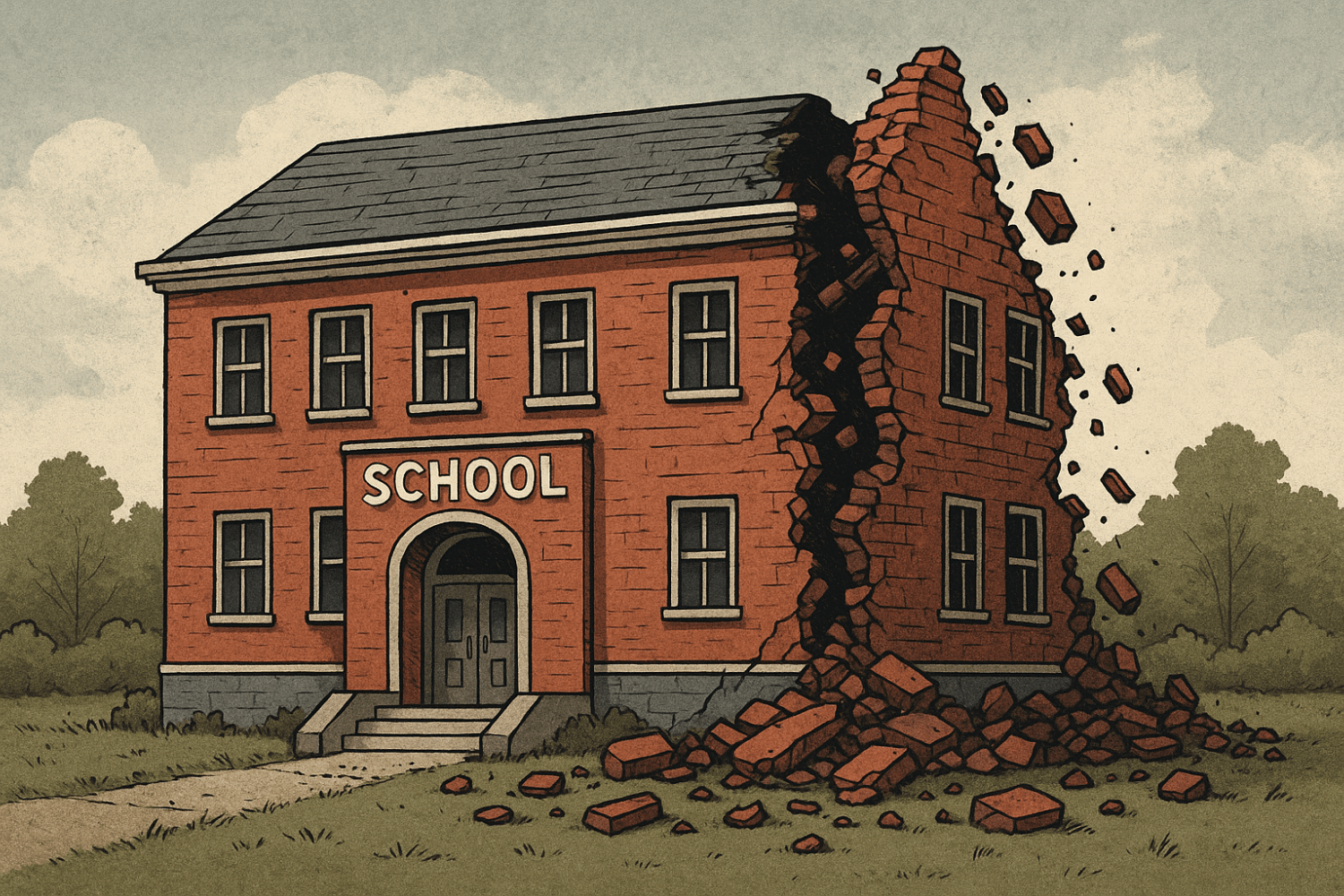Lawmakers say they’re offering tax relief and school choice. The result looks more like a slow dismantling of public education.
Across Ohio, a wave of new legislation is reshaping how public education is funded. Each bill arrives with good intentions: lower property taxes for homeowners, more options for families, or tighter fiscal discipline at the state level. But when you line them up side by side, a pattern starts to emerge. Public schools are being asked to do more with less, while private and alternative systems receive more opportunities and funding. Whether by design or by drift, Ohio is moving away from the public model that educated most of us.
House Bills 186 and 335 limit how much local governments can collect from property taxes, capping growth and tightening levy flexibility. Other measures expand homestead exemptions and reduce taxable property values for seniors and veterans. They sound compassionate and practical. Yet each one removes a small but critical piece of the local funding schools depend on. A few percentage points here and there don’t look like much until you stack them together.
At the same time, Ohio’s voucher program has ballooned into a billion-dollar system that sends public funds to private and parochial schools. The Fair School Funding Plan, once touted as the long-term fix for fairness, remains only half-implemented. Districts are now squeezed from both ends: less predictable state support and weaker local revenue.
Even lawmakers who support these reforms admit the system is still finding its footing and the full effects aren’t yet known. But for school districts, the uncertainty is already real. New proposals at the Statehouse would limit how schools renew or replace emergency operating levies—potentially requiring a new vote every time one expires.
That risk hits home in Lorain, where voters will decide on Issues 21 and 22 this November—both renewals, not new taxes. Issue 21 continues a long-standing 23.85-mill current-expense levy dating back to the 1990s, while Issue 22 renews a 3.22-mill emergency levy that provides about $3.1 million annually. District leaders say the renewal simply maintains existing services, but future changes in state law could make such renewals harder to sustain or reapprove.
A 10 percent funding loss means larger classes, outdated materials, and fewer electives. At 15 percent, districts start trimming staff and consolidating programs. By 20 percent, schools begin talking about closing buildings or merging entirely. Those aren’t scare tactics—they’re the natural math of running a system where nearly every dollar goes toward people and services.
The impact of these shifts won’t fall evenly across Ohio. Wealthier districts can absorb slower revenue growth or failed levies more easily. Low-income communities, where public schools are often the main provider of meals, counseling, and safety, have far less cushion. For them, even small funding losses translate quickly into larger classes, fewer supports, and limited opportunity.
Supporters of these measures say taxpayers deserve relief and parents deserve options. They aren’t wrong about either. But relief and choice both come with a cost, and that cost is being shifted onto the public system that still serves the majority of Ohio’s children. You can’t pull threads from a safety net indefinitely and expect it to hold the same weight.
Over the past five years, the direction of state policy has been clear. Money is following the student out of the district and into private programs, while local governments are being told to collect less. No one has to say they’re trying to dismantle public education. The outcomes speak for themselves.
Maybe this isn’t a coordinated effort to end public schools, but if it were, it would look a lot like what’s happening right now. The concern isn’t whether we offer families choice; it’s whether we’re leaving the rest behind. Ohio can’t claim to value education while slowly starving the institutions that make it possible.
Bills to Watch in 2025
House Bill 186: Caps the growth of property-tax collections tied to inflation, potentially slowing school revenue increases over time.
House Bill 335: Limits “inside millage” and certain levy renewals, reducing local flexibility to raise operating funds.
House Bill 274: Expands the Homestead Exemption for long-term homeowners, lowering taxable property values and cutting local tax income.
House Bill 61: Broadens property-tax credits for seniors and veterans, adding to local revenue loss without guaranteed state reimbursement.
House Bill 28: Would restrict or eliminate replacement property-tax levies beginning in 2026, forcing districts to seek new ballot measures instead.
Voucher Expansion (Budget Provision): Continues statewide expansion of EdChoice vouchers, now exceeding $1 billion annually in state spending.

